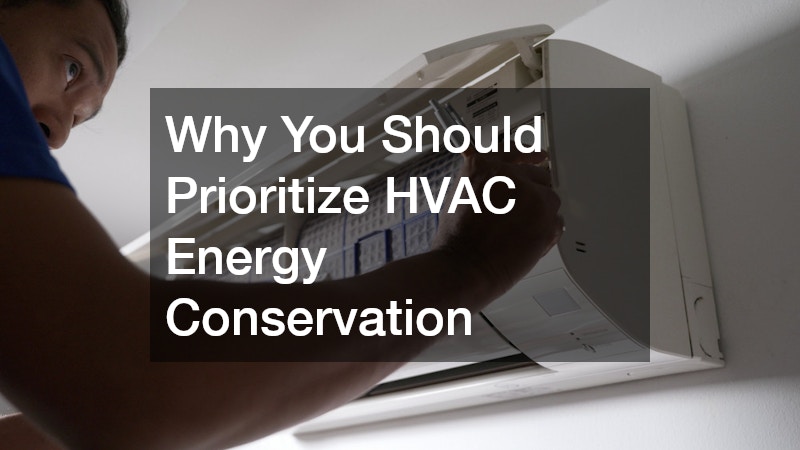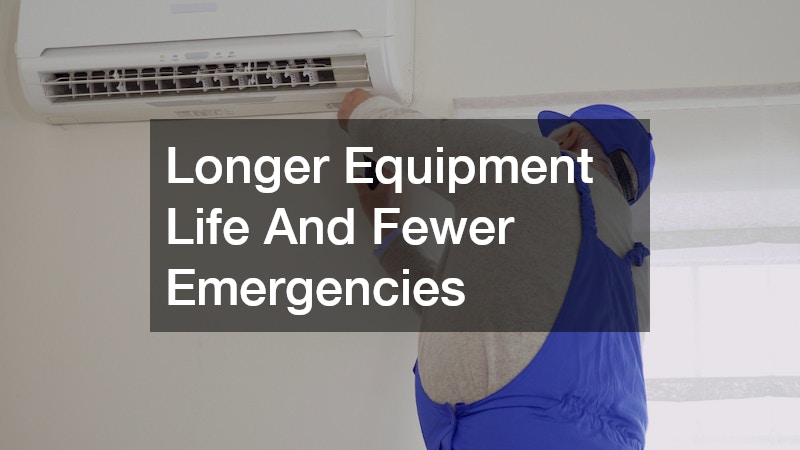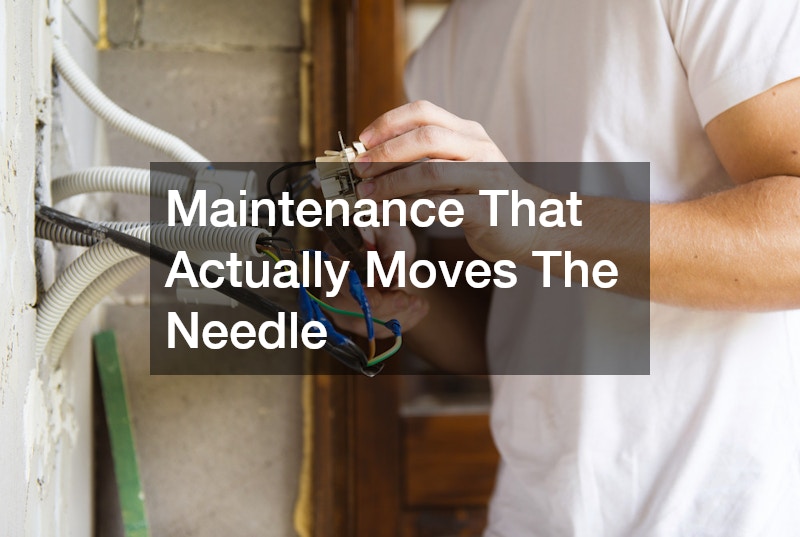Saving energy on heating and cooling is no longer just a feel-good goal. It’s a financial strategy, a comfort upgrade, and a resilience plan that pays you back in quieter rooms, steadier temperatures, and smaller utility bills. When your system does the same job with less electricity or fuel, equipment lasts longer, breakdowns are rarer, and extreme weather feels more manageable. For homeowners, landlords, and property managers alike, the smartest path forward is treating comfort as the outcome of good design, disciplined maintenance, and a handful of everyday habits that anyone can learn.
The good news is that you don’t need a blank check to get results. Most of the wins come from tightening the building shell, keeping air moving at the right speed, and using controls that match the way you actually live. Partnering with a trusted HVAC contractor and setting a simple seasonal checklist will take you most of the way there. With the right mindset, you can turn efficiency from a once-a-year chore into a reliable operating system for your home.
The Real-World Benefits Behind The Buzzwords
Energy savings are the headline, but the ripple effects are just as important. When systems run efficiently, they cycle less often and experience fewer hard starts, which extends component life and delays major replacements. Rooms reach setpoint faster, hold temperature longer, and avoid the hot-and-cold swings that frustrate families and tenants. This is the day-to-day value of hvac energy conservation in practice, not just a line item on a utility bill.
Conservation also reduces noise, drafts, and humidity complaints. Blower speeds can be optimized, filtration improved, and airflow balanced so bedrooms and living areas finally feel the same. By paying attention to airflow and sealing, you prevent the system from fighting the building itself, which is the hidden enemy of comfort.
Lower Bills Without Lowering Comfort
Every household knows the dread of summer spikes and winter surges. What most people don’t realize is that simple routine steps recapture a surprising amount of wasted energy. Clean filters, correct refrigerant charge, and clear outdoor coils can shave double-digit percentages from seasonal consumption in some homes. That’s the quiet magic of hvac energy conservation: small, repeatable tasks that compound over time.
Modern controls amplify the gains. Smart thermostats learn schedules, coordinate with variable-speed equipment, and avoid unnecessary runtimes. Zoning, sensor placement, and setback strategies keep rooms comfortable when occupied and efficient when empty. Over a year, those incremental wins add up to real dollars, which is why many households rank hvac energy conservation alongside other high-ROI home upgrades.
Longer Equipment Life And Fewer Emergencies
Efficiency is protection. Components that run within design parameters operate cooler, vibrate less, and accumulate less grime and moisture. Compressors, blower motors, and heat exchangers last longer when they aren’t overworked or short-cycling. Over time that means fewer panicked calls, better sleep, and healthier budgets. In plain terms, hvac energy conservation acts like an insurance policy you fund with maintenance instead of deductibles.
Routine service also reveals problems when they are cheap to fix. A weak capacitor, a sagging contactor, or a loose belt costs little today but can take a system offline tomorrow. Catching those issues during scheduled visits is far better than after-hours crises that require premium rates and create uncomfortable downtime for everyone in the house.
Healthier Air And Happier People
Comfort is more than temperature. Well-tuned systems manage humidity, reduce particulates, and keep fresh air moving the way it should. Filters with an appropriate MERV rating protect lungs and equipment, while balanced ventilation keeps indoor pollutants from building up. This is where hvac energy conservation overlaps with health: tighter envelopes and right-sized airflow maintain comfort with less effort from the equipment.
Moisture control is especially important. Too much humidity fuels dust mites, mold growth, and musty odors, while too little dries out skin and sinuses. Smart dehumidification strategies coordinate with cooling so you don’t overshoot setpoints just to dry the air. The result is a home that feels better at the same number on the thermostat—proof that efficiency and comfort can rise together.
Maintenance That Actually Moves The Needle
Good intentions don’t save energy—habits do. Build a calendar for filter changes, coil cleaning, condensate checks, and outdoor unit clearance. Twice-a-year tune-ups catch refrigerant and combustion issues and confirm airflow is within spec. If you’re not sure where to start, schedule a benchmark visit to measure static pressure, temperature splits, and duct leakage, and then turn findings into a simple checklist. Turning data into routines is the practical side of hvac energy conservation you can control.
Don’t wait for breakdowns to think about service partners. Establish relationships with local hvac companies so you have priority during heat waves and cold snaps. If your system limps along and you keep calling for ac repair every summer, ask your technician to separate band-aids from root-cause fixes and show you where the energy is actually going.
Smarter Controls And Everyday Behavior
Technology helps, but only if it’s used well. Program schedules that mirror how you live, and use geofencing or occupancy sensors to avoid conditioning empty rooms. In homes with variable-speed or two-stage equipment, allow longer, lower-intensity cycles that stabilize temperature and humidity. Done right, hvac energy conservation looks like quiet systems that you hardly notice because they aren’t constantly roaring to life.
Behavioral tweaks matter, too. Keep interior doors open when practical to promote circulation, close blinds on hot afternoons, and seal obvious gaps where conditioned air leaks outside. Small rituals like these reduce runtimes without forcing you to live uncomfortably, making conservation feel easy rather than austere for everyone in the household.
The Building Envelope: Your First Line Of Defense
You can’t fix with equipment what the building leaks through walls, ceilings, and ducts. Air sealing, attic insulation, and duct repair often beat fancy upgrades on a cost-per-degree basis. Before spending big, test big: a blower door and duct leakage test will show where energy and comfort are slipping away. When you tighten the shell, you need less capacity to hit the same comfort, which is the quiet math behind hvac energy conservation success stories.
Pay special attention to ducts outside the conditioned space. Leaky, uninsulated runs in attics or crawl spaces can waste a quarter or more of delivered energy. Sealing and insulating those pathways shortens runtime, protects equipment, and fixes persistent hot or cold rooms that no thermostat trick can solve.
Sizing, Design, And The Right Kind Of Upgrade
Bigger isn’t better in heating and cooling—better is better. Oversized units short-cycle, create humidity problems, and burn more electricity than right-sized counterparts. If you’re planning ac installation for a remodel or replacement, insist on a proper load calculation and a duct assessment rather than a “same size as before” estimate. The discipline of hvac energy conservation starts with matching equipment to the building, not the other way around.
When upgrades make sense, think in systems. Pair efficient equipment with a smart thermostat, tight ducts, and balanced airflow. Ask ac installation companies to explain staging, variable-speed options, and heat pump compatibility in your climate. The best solution is often a package, not a single shiny box, and the right package will deliver comfort with lower operating costs for years.
Ducts, Airflow, And Quiet Comfort
Air that can’t move can’t cool or heat. Static pressure tells you how hard the blower is working to push air through filters, coils, grilles, and ducts. If pressure is too high, airflow drops, coils get colder than they should, and efficiency plummets. A competent air conditioning contractor will look beyond the equipment to the system surrounding it and recommend changes that let air move at design rates. With correct airflow, hvac energy conservation happens every minute the system runs.
Noise is a clue, too. Whistling returns, rattling grilles, and roaring supply vents suggest restrictions that waste energy. Smoother, properly sized duct transitions and quality registers cut noise and resistance, which is why “quiet” homes so often turn out to be the efficient ones. If you’ve lived with loud vents for years, airflow fixes may deliver comfort you never realized was on the table.
Incentives, Rebates, And The Payback Picture
Efficiency projects aren’t only about doing the right thing; they can be about doing the smart financial thing. Utility rebates, tax credits, and manufacturer promotions can significantly lower the cost of upgrades. When you stack incentives with lower monthly bills, payback timelines shorten and return on investment improves. This is one reason hvac energy conservation has moved from niche to mainstream in recent years.
Ask your local hvac contractor to lay out total cost of ownership rather than just the invoice price. Over ten years, efficient equipment with lower operating costs and fewer service visits may beat a cheaper baseline unit by a wide margin. The math gets even better when proper design eliminates chronic comfort complaints that drive callbacks and dissatisfaction.
What To Do When Things Go Wrong
Even with good habits, things break. When equipment fails, start by confirming basics—power, thermostat settings, tripped breakers, and clogged filters. Then decide whether you’re treating a symptom or a cause. If you keep needing ac contractors to recharge refrigerant, you may have a leak that’s draining both comfort and cash. Fixing the leak is a double win: the repair reduces waste and restores performance.
Choose service partners who look for root causes. Teams that handle local air conditioning repair every day should be able to show you readings, explain findings, and quote options that address both reliability and efficiency. When winter arrives, the same mindset applies to local heating repairs so your furnace or heat pump runs safely and cheaply all season long.
Owners, Landlords, And Property Managers
If you provide housing, efficiency is a resident experience issue, not just a number on a spreadsheet. Tenants judge comfort by how fast rooms settle, how even temperatures feel, and whether humidity stays in the sweet spot. Proactive maintenance reduces complaints and keeps renewals higher because residents sleep better and worry less. Across a portfolio, standard filters, scheduled tune-ups, and documented duct repairs make buildings easy to heat and cool.
Vendors matter here, too. Build relationships with local hvac companies that can respond quickly during weather events and keep routine service humming in the background. When replacement makes sense, coordinate ac installation with other trades so you don’t undo gains with poorly sealed penetrations or crushed ducts during renovations. A little project management goes a long way toward preserving efficiency after the installers leave.
The Role Of Training And Culture
Technology and checklists won’t stick without people who care. Teach everyone in the household or the maintenance team how to read filters, listen for unusual sounds, and keep outdoor units clear of debris. Encourage reporting small changes—a new vibration, a whiff of mustiness, or an unusual cycle length—so problems are caught early. Turning awareness into action is the human side of hvac energy conservation that separates wishful thinking from real results.
Celebrate the wins. Share before-and-after bills, track average runtime during extreme weather, and notice how much quieter the home sounds after airflow is corrected. Momentum builds when you can see and feel the difference, and that momentum sustains the habits that protect your investment.
Choosing The Right Partners
Not all service providers approach efficiency the same way. Look for a local hvac contractor who measures first and sells later, brings test instruments to every tune-up, and documents findings. Ask for references and examples of solved comfort problems, not just installed equipment. When planning replacements, interview multiple ac installation companies and compare their designs, not only their prices. Good partners make conservation easier because they think like system designers, not parts changers.
If you’re weighing a major upgrade, ask for a few scenarios: repair now and replace later, replace like-for-like, or replace with a high-efficiency package and duct corrections. Seeing costs, savings, and comfort impacts side by side helps you choose the path that fits your goals and budget without sacrificing reliability. Ask each bidder to show their assumptions about airflow and duct condition so you can compare designs, not just price tags.
Cost avoidance matters as much as direct savings. When a clean coil prevents a mid-July emergency call, you avoid after-hours premiums and the scramble of finding parts in a rush. When balanced airflow ends the chronic complaint about the back bedroom, you protect renewals and reputation. If you operate rentals, fewer urgent calls free time for preventative projects that compound over the year. Think of your maintenance plan the way ac installation companies think about project schedules: sequenced, documented, and designed to minimize surprises.
Efficiency isn’t a gimmick; it’s a way of running your home or property with intention. When you treat comfort as an outcome of design, maintenance, and smart habits, bills drop and satisfaction rises. Your equipment lasts longer, your rooms feel better, and your nights are quieter. That is the true promise of hvac energy conservation: a home that works better because it wastes less.
Along the way, you’ll still need help sometimes. Pick an air conditioning contractor who explains options clearly, lean on ac contractors who diagnose precisely, and choose partners who think in systems. When replacement makes sense, coordinate ac installation with air sealing and duct improvements so you capture all the gains at once. And if a crisis hits, call for local air conditioning repair with a plan to address the root problem, not just the symptom.





